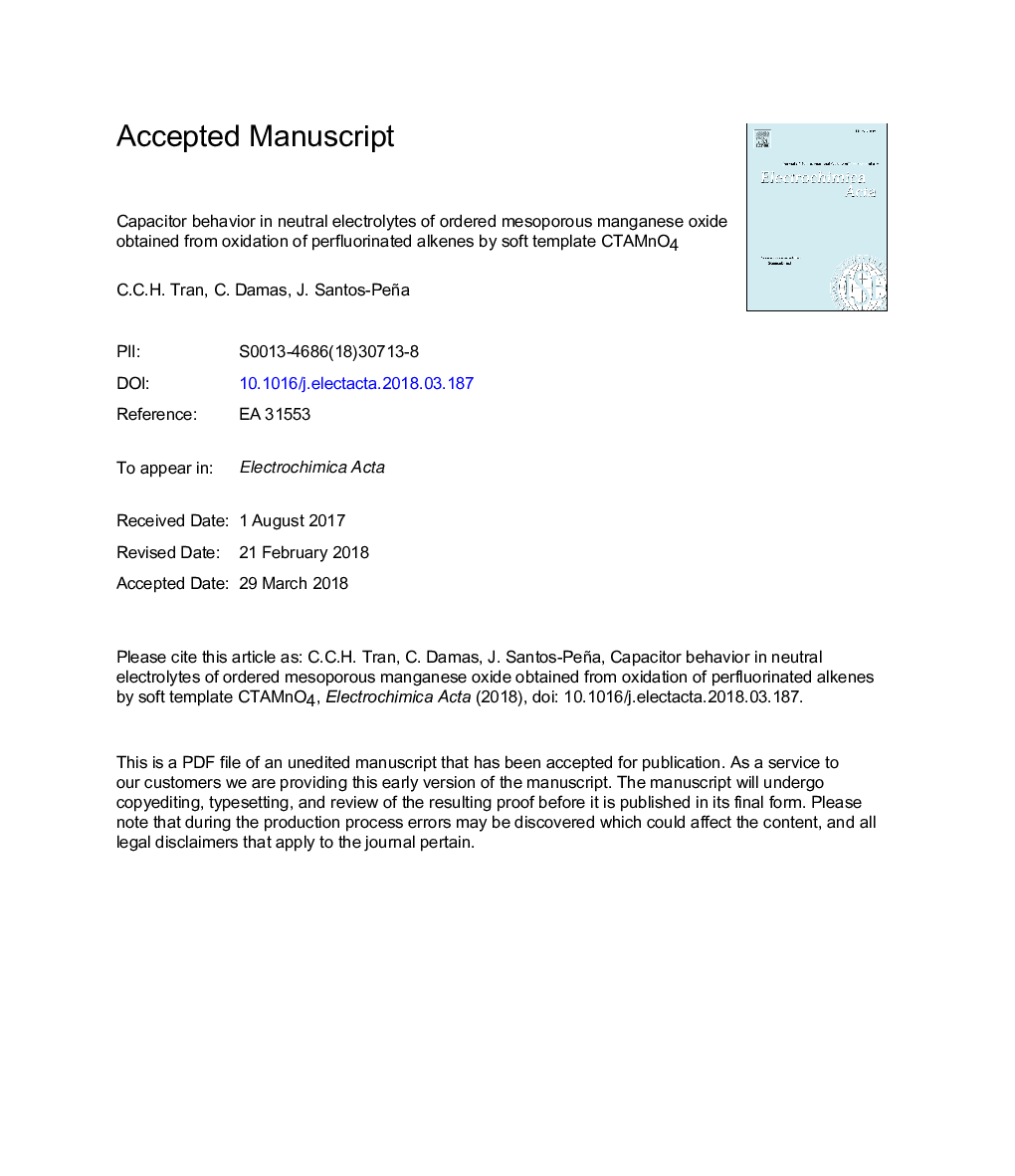| Article ID | Journal | Published Year | Pages | File Type |
|---|---|---|---|---|
| 6603144 | Electrochimica Acta | 2018 | 32 Pages |
Abstract
Ordered mesoporous manganese oxides were produced as a by-product of the oxidation of perfluorinated alkenes by soft template CTAMnO4 (CTAâ¯=â¯cetyltrimethylammonium). Pores diameter was in the 2.4-6.0â¯nm range and pore walls were made of birnessite nanocrystallites. Alkene dimensions influenced the oxides morphological and textural properties, including pore ordering. For a particular alkene (1H, 1H, 2H Perfluoro-1-Decene), the surface specific area (SSA) of the manganese oxide was as high as 265â¯m2â¯gâ1. Mesoporosity, combined with large SSA, guarantee rapid diffusion and access of the electrolyte to the electrochemical capacitor electrode surfaces. Composites of mesoporous oxides, black carbon and Teflon in a 75/12.5/12.5â¯wt ratio provided capacitances in the 150-175â¯Fâ¯gâ1 range in neutral aqueous 1â¯M K2SO4 electrolyte. Asymmetric AC||MnO2 devices, cycled reversibly in a 0-1.7â¯V voltage window, had a pore-depending activation time during which capacitance increases upon cycling. Ragone plot for these MnO2-based electrodes shows suitable gravimetric energy retention with increasing power, comparable or higher than most of the literature results concerning composite electrodes (except for microsupercapacitors). For instance, energy provided by such devices, at power close to 0.2â¯kWâ¯kgâ1, approaches 20â¯Wh.kgâ1. From this point of view, our devices can compete with others containing a very high amount of low density and expensive conductive additive in the positive electrode formulation, which penalizes the volume and cost of the final device.
Related Topics
Physical Sciences and Engineering
Chemical Engineering
Chemical Engineering (General)
Authors
C.C.H. Tran, C. Damas, J. Santos-Peña,
